Dogs help conservationists sniff out koala populations
- Published
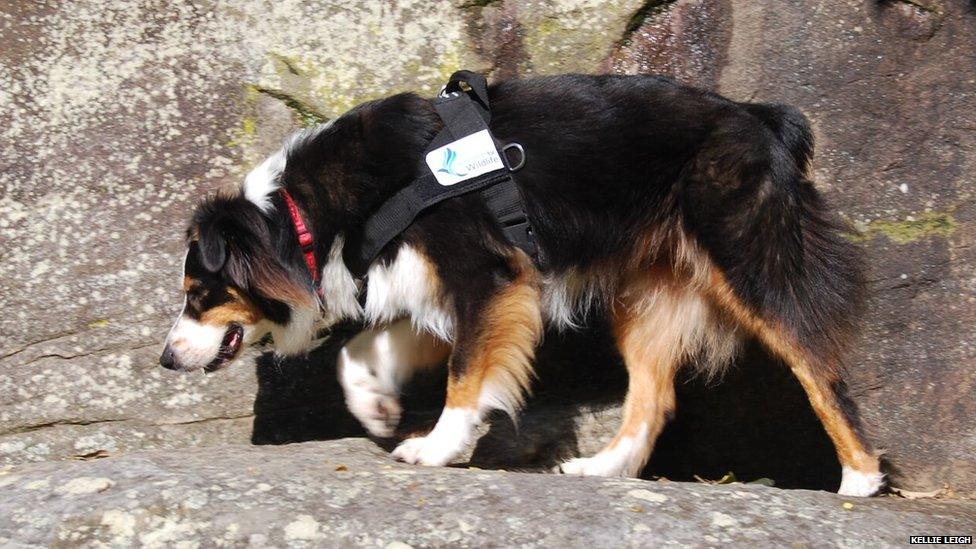
Six-year-old Australian shepherd, Badger, is being trained to track koala scent
Koalas are considered at-risk across much of Australia. Researchers are turning to sniffer dogs to help locate and protect these iconic marsupials.
The Greater Blue Mountains area, inland from Sydney, is a vast wilderness of dense eucalypt forests and sandstone escarpments of about 10,000 square km (3,861 sq miles).
Two years ago, as large tracts of the forests were ravaged by bushfires, there were several rare sightings of koalas seeking refuge, including the first in the upper Blue Mountains since the 1940s.
It was an encouraging sign for the iconic marsupial, which is now listed as vulnerable in the states of New South Wales and Queensland, and in the Australian Capital Territory.
"Before these fires, we weren't sure that koalas existed in many of these areas," says conservation biologist Kellie Leigh, founder of a not-for-profit organisation called Science for Wildlife.
Rare sightings
Ms Leigh, whose research career began tracking wild dogs in Zambia, is now working to locate the surviving koala populations, and has collected 50 sightings since November.
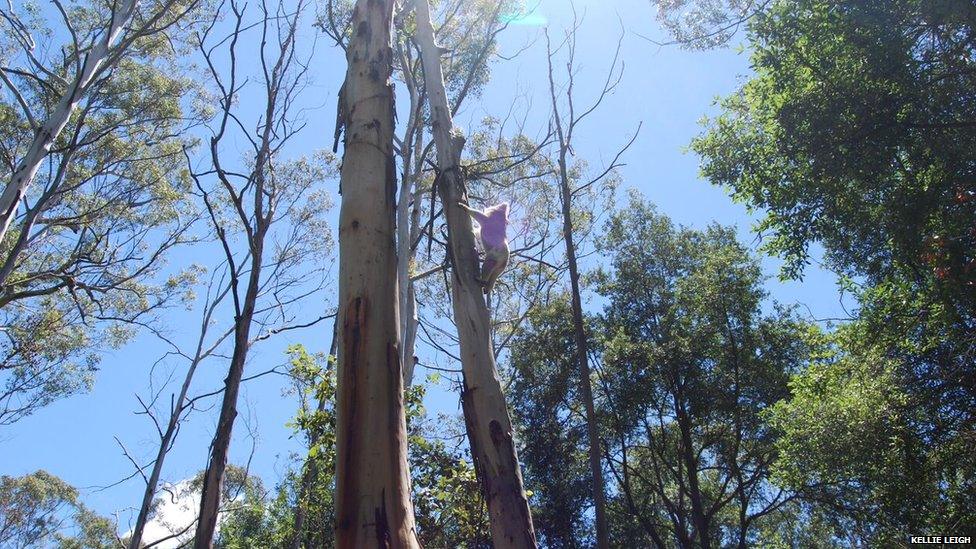
It is not easy spotting koalas, which are usually well-hidden in eucalyptus foliage
But in the remote and rugged terrain that makes up this Unesco World Heritage site, traditional surveying methods such as looking for scats on the ground and counting koalas in plain view are largely ineffective.
"The trees are up to 20 metres (65.6ft) tall with thick canopies, which means the koalas can hide themselves really well," says Ms Leigh, adding that high rainfall degrades scat.
Her secret weapon is a six-year-old Australian shepherd named Badger, who is being trained to track the fresh scent of koalas from fur swabs.
As they climb trees, koalas leave scent trails on bark, and odour molecules, which are heavier than air, can fall to the ground or travel downwind, getting caught in vegetation.
Dogs can detect these scents at concentrations down to parts per trillion, which in volume terms, is about the equivalent of a teaspoon inside two Olympic-size swimming pools.
The nose knows
Structures inside the nose that transmit smell signals to the brain are much bigger in dogs than in humans, says Rebecca Dunlop, a physiologist at the University of Queensland's School of Veterinary Science.
Their wet snouts capture more odour molecules than humans, and they also have 40 times the number of smell receptors in their brains to analyse the scent, Ms Dunlop says.
Long used to detect drugs and explosives, dogs have also been shown to reliably detect early stage cancers and are increasingly being used for conservation and bio security.
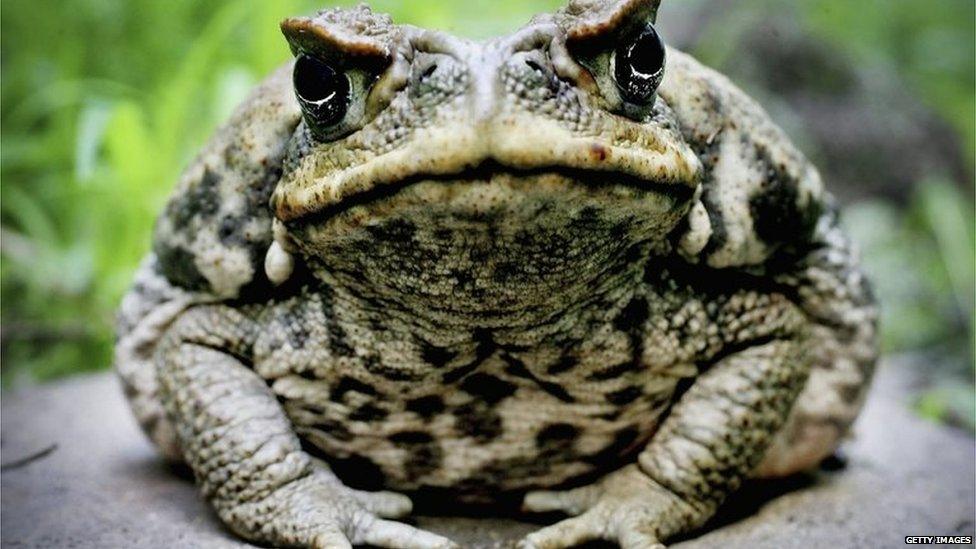
Dogs are used to sniff out everything from elicit drugs to invasive species such as the cane toad
In the US, sniffer dogs are tracking threatened species, ranging from wolverines to iguanas, and have even been used to sniff-out whale scat underwater.
In Australia, meanwhile, detection dogs are locating the endangered marsupial, the quoll, and are working to prevent the spread of cane toads.
Ms Leigh recently demonstrated that detection dogs had a greater than 80% success rate in locating scats across diverse Australian habitats.
Few limits
Her results, external were published in the journal Methods of Ecology and Evolution.
"If they're trained the right way, the limitations of dogs are very few," she says.
Luke Edwards trains the Otway Conservation Dogs in Victoria that search for tiger quolls.
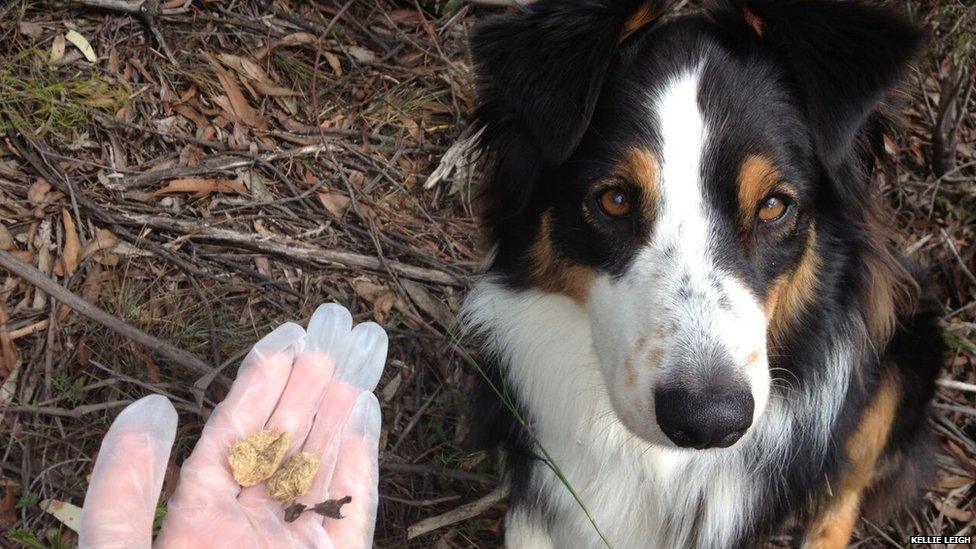
When a sniffer dog finds the source of a smell, such as animal fur, it is rewarded with play
While breed doesn't necessarily matter, he says you need to choose "a dog with high motivation for food or playing with a tennis ball".
Dogs are taught to associate a reward with the source of an odour, and to perform a "passive alert" when they find the source by sitting down or repeatedly touching their nose to the ground.
"If they're alerting properly, we move them into thicker bush and environments where we know we'll find the animals," says Mr Edwards.
Handlers also play an important role: they have to be physically fit, capable orienteers, and able to read the body language of their dogs to know when they have picked up a scent.
GPS devices
Once he is ready, Ms Leigh will take Badger into the parklands off-leash to systematically search for koalas, starting in areas where there have been sightings.
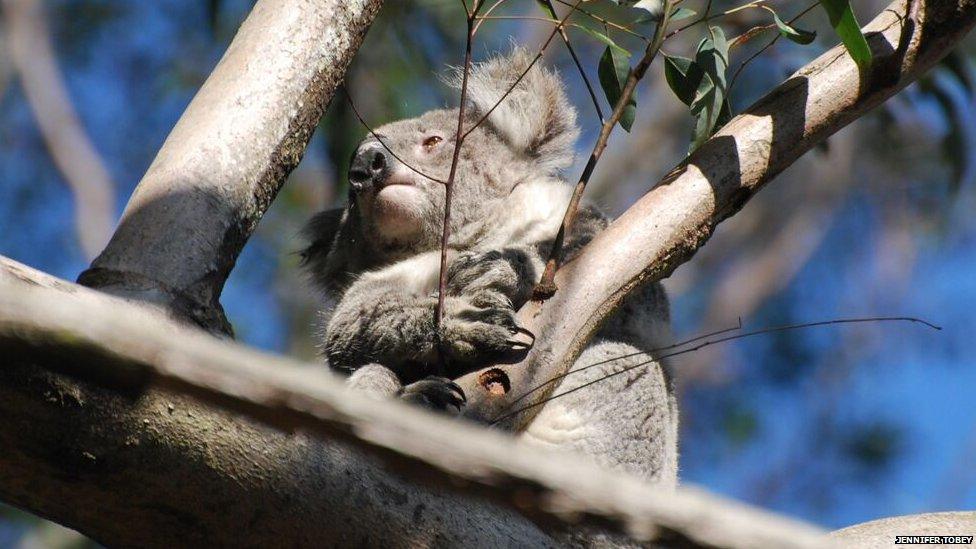
Koala populations across Australia are under threat from habitat destruction
Science for Wildlife is also training a second dog with its partner organisation, K9 Centre Australia, in Queensland.
Ms Leigh and her team will conduct detailed ecological studies of any koalas they find to determine possible distribution patterns throughout the rest of the region, and will collar the animals with GPS devices to track their movements.
She says this information will be shared with land managers, rural fire services and community groups in the region, and will feed into conservation plans to protect koalas from bushfires and encroaching development.
Myles Gough is a Sydney-based science writer.
- Published8 March 2015
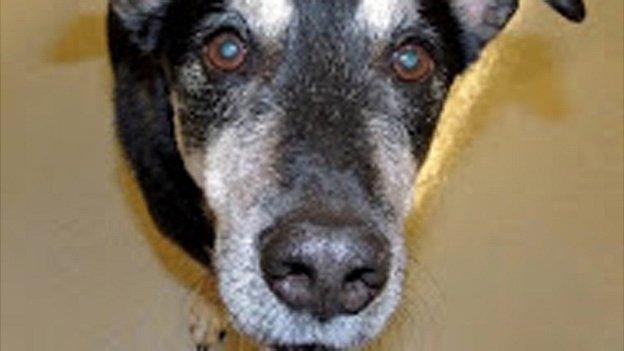
- Published10 June 2015
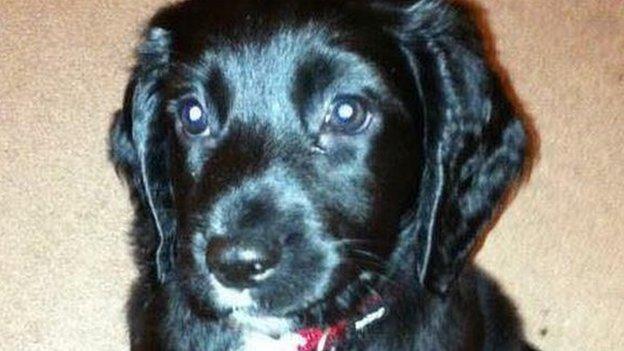
- Published26 May 2015
